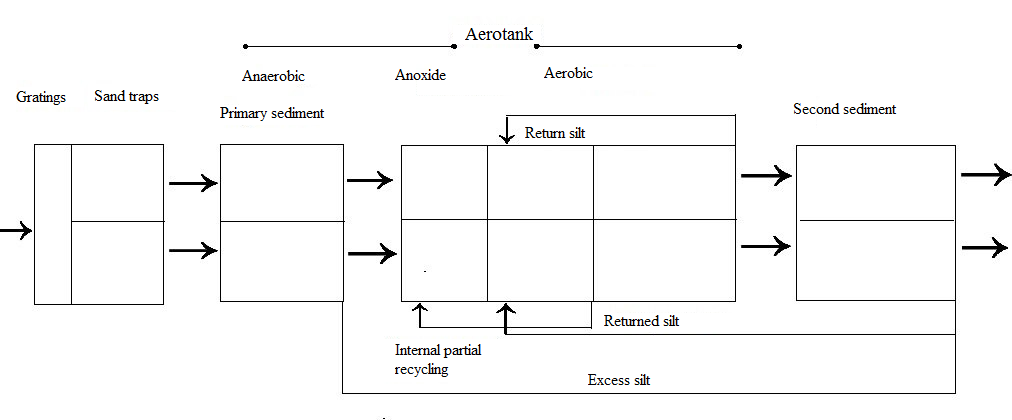INST 2013: The archive
Archive:
Competition Rules and Regulations(part 1, to make acquaintance)
Tournament Results:
According to selection from 35 teams in extramura round, from 21 teams from in intramural round, 6 teams passed in a final round.
Results of the final round:
1 place: SPbU, Saint Petersburg
2 place: MSU, Moscow
3 place: BSU-1, Minsk
4 place: NSU-1, Novosibirsk
5 place: PFUR, Moscow
6 place: KhNU, Kharkov
5 days of competitions, 21 teams of young scientists from Russia, Ukraine, Belorussia and Estonia, 70 experts from the science and industry from Russia, Ukraine and India, more than 100 scientific projects were submitted for consideration of the competent jury.
The International Natural Sciences took place in November, 13 – 18 on base of the Chemical department of SPbU and NIU ITMO. The Organanizers were Saint-Petersburg State University and business-incubator QD.
From 35 student teams participated in the extramural round only 21 passed to the intramural one and 6 – to the final. The participants were solving practical problems being actual in Russia and abroad, a half of them were proposed by industrial corporations. Projects based on actual missions of the corporations will be sent to the problems’ authors and may be applied in industry.
«The main aim of the Tournament is not only new acquaintances and experiment of public presentations, but also a practical solution of scientific problems» - mentioned the founder of the Tournament Sergey Safonov. During the final day of the Tournament members of the jury marked the exceptional value of the fact, that “students learn how to solve applied problems”. According to Anshul Gupta, the associate professor from Mumbai University (India), the Tournament was organized at a very high level.
Students from four countries (Russia, Ukraine, Belorussia and Estonia) took part in the Tournament. The Organizers are sure, that acquaintances made during the Tournament will help the formation of international contacts between young scientists and development of science on the whole. One day of the Tournament was hold in English.
In the context of the Tournament excursions to the chair of laser chemistry and laser science of materials and also to the chair of physical organic chemistry of SPbU took place.
The International Tournament was hold with a support of private companies, which means that they are concerned in the attraction of young scientists and searching scientific staff among the students of technical description. Companies “Vertex”, “Hach Lange”, “Pharmsintez”, “ Unilever”,”Akvaphor”, “Millab”, “Analytpribor”, “International Paper” and “Analyt Products” became sponsors of the event.
This year the scientific school «Applied Chemistry and Materials Science» attached to the Tournament took place , it acquired a fresh interest not only among the participants, but also among young scientists from Saint-Petersburg Universities.
All teams are welcome to participation in the International Natural Sciences Tournament next year. Also we admit new teams from Russia, the CIS countries, Europe and Asia with a great pleasure.
Qualifying problems (extramural round)
IV International Natural Sciences Tournament, 2013
-------------
To participate in the intramural round of the Tournament, please send solutions of at least two of the three offered problems before September 20, 2013. The teams that sent solutions for three problems, the scores for extramural round will be calculated as the sum of points for two best solutions.
Solutions and information about team members should be sent totournament@chem.spbu.ru. If you are planning to participate in the Tournament please pre-register on www.scitourn.com/reg
Problems for the intramural round of
the Inteкnational Natural Sciences Tournament
(November 13 – 18, 2013)
Part A (November 14)
1. ‘The Curious Case of Benjamin Button’
The modern methods of age determine using DNA specimens possess some disadvantages. It might be concerned with the low precision, slow velocity or complicity of realization. However, due to the development of the bioinformatics and NGS (next-generation sequencing) a break in this area of study is expected. Please, propose a rapid and accurate method for determine of human age using DNA being educed from any type of tissue or biological liquid. The given method must be easy-to-work, be applicable for low quantities of DNA (less than 10 ng.) and to provide an answer about the age to within 5 years. Please, examine the method for theoretical and practical limitations.
2. ‘Nanites’
Richard Feynman and Eric Drexler predicted that nanotechnologies will change our future. However, controlled displacement of nanoobjects still remains a difficult problem. Recently metal nanofibres with magnetic surface have been synthesized: it is possible to affect on their properties and spatial orientation using electromagnetic field. What new scopes could you propose for these materials? In which present technologies it could be used?
3. ‘Chlorine and & Co’ (Unilever)
During the industrial production of detergents quality coefficients of the finished commodity and time expended for the analysis of these coefficients are of the great importance. Please, propose methods for measurements of free alkali in a range of 7 – 15 mg/l (+/- 0.05 mg) and active chlorine in a range of 2.5 – 4.0% (+/- 0.05%) less than in 5 minutes.
4. ‘Drug Delivery’ (Pharmsyntez)
One of the most perspective methods for decreasing of the drug’s toxicity, its prolongation, providing a convenient transport in the interior milieu and target drug delivery to cells is creation of a liposomal drug form. Apart from the main structural phospholipids minor lipidic components (up to 1%) are also introduced into the liposome shell. It might be antioxidants (tocopherol), some addition that provide liposomal sensitivity to the target, etc. The degree of inclusion (i. e. part of included component to the whole quantity of the active substance) is also important characteristic of a liposome. Obviously, the closer is that value to 1 (100%) the higher is a quality of the drug. The degree of inclusion should be, as a rule, nothing less than 90%. Nowadays some methods for determination of the degree of inclusion are known. However, these methods are not multipurpose and have a number of limitations. Please, propose a foolproof and efficient method for quantity determination of minor lipidic components content against a background of main components and the degree of inclusion of the active component.
5. ‘From Apple to Zuchinni’
India is the second world's biggest consumer fruits and vegetables company. 30-35% of fruits and vegetables get out of order due to the deficiency of cold storehouses. Please, propose new approaches for organization of efficient cold storehouses (supported temperature is 5 ºC) on a farm scale.
Part B (November 16)
6. ‘Black gold’
Bitumens and other superheavy forms of petroleum are extracted from sand-fields by heating bitumen with vapor for increasing its tenacity up to the fluidity-point. This method is called Steam Assisted Gravity Drainage (SAGD). It is the main method which is used for oil-bearing sands. The main disadvantage of this method is commercially requirement of water and natural gas for vapor generation. Please, propose new methods or approaches for bitumen extracting without using water or demanding appreciably less quantity of water and gas. Please, estimate practical significance of your method.
7. ‘Fluorine raw materials’
It is known, that fluorine is present in trace quantities in many minerals, for example, in coals. It is concerned with fluorapatite, fluorite and other fluorine-containing minerals in their composition. During the coal carbonization fluorine goes into the water phase. In order to prevent this undesirable process fluorine should be extracted from coal before the carbonization. Please, propose physicochemical or biological methods for removing fluorine from solid raw materials. Estimate the compatibility of your method with standard carbonization technology.
8. “Bioreactor” (Unilever)
During the water treatment using membranous bioreactor because of the biological decomposition of contaminants active aerobic silt is formed. The initial content of liquid is 98 % (perfume-cosmetic compound). It is possible to dry the silt up to 75-80 %. Please, propose variants for effective using of the silt as a raw material or its safe deletion.
9. ‘Wall-E’
Often we can observe heaps of cathode-ray tubes (CRT) extracted from television receivers and monitors being driven somewhere away… The point is that nowadays there is no ecological efficient technology for CRT treatment. Glass from CRT is known to contain a considerable addition of lead. In what areas this glass could be used? Please, propose a CRT treatment circuit with further utilization of this glass.
10. ‘Doom’
In the fantastic movie “Doom” characters used special “walls” that in the “closed” state represented a wall and in the “opened” state – conglomeration of particles hanging in the air and being able to let someone pass through the barrier. The transition between closed and opened states occurred very fast. Please, propose a mechanism of the wall and describe its properties. The main characteristics of the wall are the velocity of opening/closure and safety in use. What problems could this technology solve in real life?
Part C (November 17, the final round)
11. ‘Petty intrigues’
One of the main problems of the agricultural economy sector is to store grain after the harvest. In a whole world there is a need of protection of grain from small and brisk rodents. They can gnaw even a reinforced concrete. Please, propose new materials, which could be used for creation of a firm tank for grain storing (a sack, a bag or a container). The material must be long-lived and reasonable.
12. ‘The Hound of the Baskervilles’ (Hach lange)
The biological treatment is safe and handy method for household and domestic sewage. In theory sewage treatment removes phosphorus- and nitrogen-containing substances up to the pollution standard, but in practice this process is not always perfect. Below there is a sketchy plan of construction for sewage treatment.
Due to some reasons, which are not obvious for technologists, the process lead to the total purification of sewage from nitrogen-containing substances, but at the same time the content of phosphorus increase. Please, propose possible reasons for this fact and try to solve this problem.

13. ‘Hasta La Vista, baby’ (Analytpribor)
During the processing of ore, bucking is of a great importance. Firstly, ore 15-20 cm in height get to the one metre wide conveyor. Fragments of technological mechanisms, which are in quarry, for example, bucket tooth, could fell in ore. These fragments consist of high-resistance high-duty alloys containing vanadium, manganese and molybdenum, which do not have magnetic properties. High-duty foreign body falling into the crusher breaks expensive equipment and leads to the halt of conveyor. Please, propose a method of detection foreign bodies into the ore torrent on the conveyor before the bucking. Visual detection is impossible (the foreign body is under the ore layer). Please, take into consideration, that the target ore contain about 20 % of iron oxides (haematite and magnetite) and have magnetic properties. However, the value of magnetic susceptibility in the torrent is multivendor, because iron content ranges within 5-10 %.
14. ‘Call of Jungles’
According the recent researches people who keep a vegetarian diet have a considerably less risk of cardiovascular diseases therefore they could live more than those who eat meat. Please, examine age limits for changing to the vegetarian diet for young and middle aged people. Can the human organism have innate or acquired physiological peculiarities because of which he or she must keep an algoristic diet: vegetarian or eating meat (examine both cases).
15. ‘Bubbles’
Please, propose new efficient physical/mechanical methods for air microbubbles generation (up to 100 micrometer) in a tap water without using chemical additives. Proposed method should be portable, adapt to continuous stream of water and work even if there are suspended particles in water. In which areas could this method be required?


